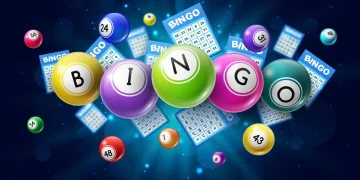Tap for Tension: The Neuroscience of Slot Satisfaction
At a glance, the act of tapping a screen to spin a slot reel may seem innocuous—even trivial. Yet beneath that digital gesture lies a layered web of brain activity, reward anticipation, and neurochemical trickery. Slot machines—especially in their online avatars—aren’t just games of chance; they’re neurological feedback loops, expertly engineered to press all the right mental buttons.
Every spin isn’t just a shot at winning; it’s a calculated invitation to your brain’s dopaminergic pathways. When a player taps to initiate a spin, they engage a complex interplay between the striatum, which handles reward expectation, and the orbitofrontal cortex, the part of the brain that evaluates outcomes. This isn’t mere amusement—it’s a microdose of high-stakes psychology.
What’s particularly curious is that the brain reacts not just to wins, but to near wins. If those gleaming symbols almost align, the brain still showers itself with dopamine as if victory had occurred. This sensation—what scientists dub a “frustrated reward state”—keeps players glued, caught in a loop where hope becomes habit.
The anticipation before the reels land—those fleeting seconds of rolling graphics and crescendoing sound—isn’t accidental. It’s the tension curve, that sweet neurochemical space where adrenaline flirts with dopamine, lighting up the amygdala and limbic system like a jackpot itself. That moment of “maybe” becomes the hook, far more potent than the win.
Online casinos have fine-tuned this tension into a tactile ritual. The tap, the whirl, the result—it becomes a rhythmic pattern. Over time, this builds a form of procedural memory, where players don’t consciously decide to spin again—they just do. This phenomenon is especially pronounced in platforms like pgvip789, where slot interfaces are designed to feel both instinctive and immersive, almost like second nature.
Furthermore, apps such as pgv2 integrate haptic feedback and dynamic audio, enhancing sensory engagement. These elements may seem cosmetic, but they actually stimulate the insula, the brain’s center for bodily awareness. This trick convinces players that what’s happening onscreen has a physical counterpart—making virtual outcomes feel more tangible, more personal.
Interestingly, slot satisfaction isn’t only rooted in victory. Losses—particularly when spaced with intermittent wins—can create a variable ratio reinforcement schedule, the same psychological mechanism that fuels social media addiction. You never know when the next reward will arrive, so you keep tapping. Just. One. More. Time.
And yet, despite this cognitive manipulation, players return not out of ignorance, but out of desire. The game, wrapped in glowing symbols and catchy tunes, offers an escape, a ritual, a narrative. Each spin holds a story, and each loss carries the promise of redemption on the next tap.
In a digital age where attention is currency, slot games have weaponized neuroscience to hold the mind captive. It’s not just about winning coins—it’s about chasing a chemical thrill encoded deep in our circuitry. So the next time your thumb hovers over that spin button, remember: it’s not just a game. It’s your brain playing tricks—with the house always watching.














